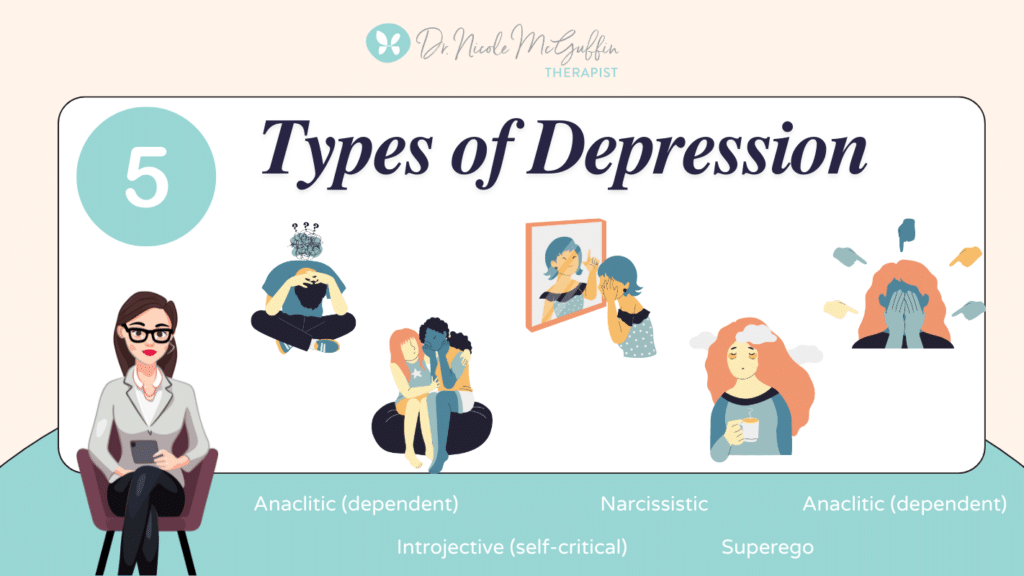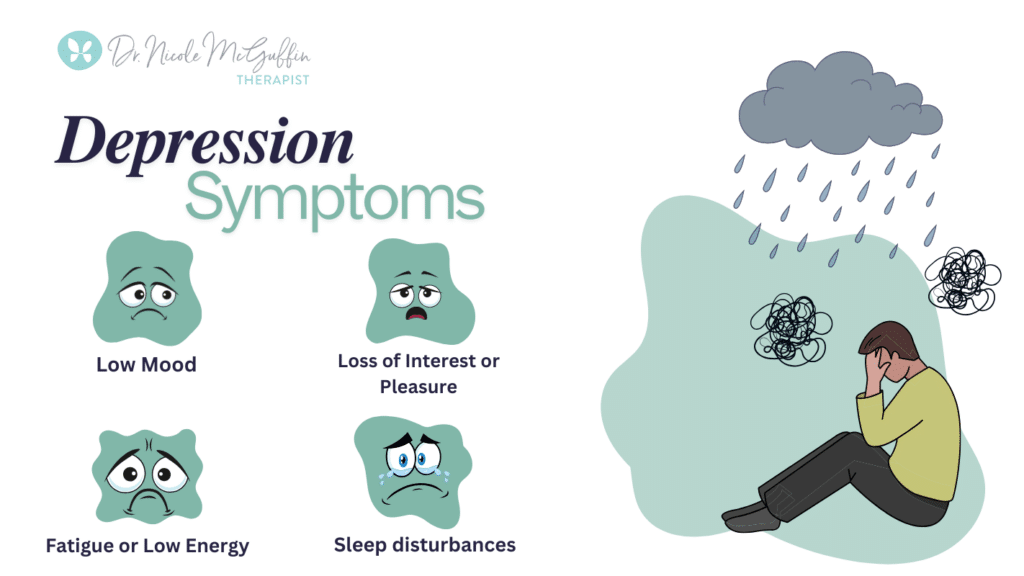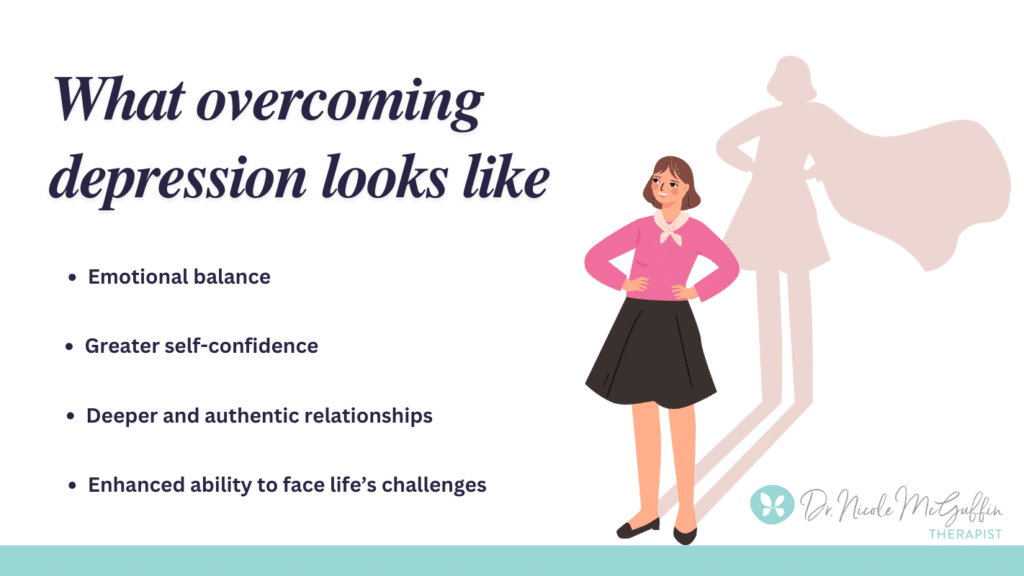Depression is more than sadness—it’s a signal from the inner self that something is unresolved. From a psychodynamic perspective, depression often emerges as a response to unmet emotional needs and unresolved conflicts rooted in early relationships. These early experiences shape how we perceive ourselves and the world. When those perceptions are steeped in feelings of unworthiness, rejection, or inadequacy, depression can take hold. Other words for it are abandonment depression and abandonment anxiety.

What Is Depression?
Depression is not just a set of symptoms but a complex emotional state rooted in the self’s struggle to maintain stability. It’s a response to an internal collapse—a defense against feelings of loss, abandonment, or inadequacy that have overwhelmed the capacity of the self to cope. At its core, depression reflects unmet emotional needs and unresolved relational conflicts.
James Masterson described depression as a defense—a way the mind attempts to manage feelings of loss, anger, or abandonment that may feel too overwhelming to confront. You might feel sad, disconnected, or fatigued, not because you’re “broken,” but because your inner self is seeking acknowledgment and healing.
Key indicators of depression may include:
- Low Mood or Pervasive Sadness: Feelings of hopelessness or emptiness, often tied to a sense of emotional disconnection.
- Loss of Interest or Pleasure: A withdrawal from once-enjoyed activities, mirroring a deeper withdrawal from authentic engagement with life.
- Fatigue or Low Energy: Exhaustion that reflects the mental and emotional energy spent suppressing painful feelings or maintaining defensive structures.
Other symptoms can include changes in appetite, sleep disturbances, difficulty concentrating, or even physical symptoms like chronic pain. These symptoms are not arbitrary; they signify the ways in which the self is struggling to manage inner conflicts and unmet needs.
Rather than viewing depression as simply a “disorder,” it can be understood as the psyche’s way of signaling that something essential is missing or unresolved. Therapy provides a space to listen to this signal, uncover its origins, and begin the process of rebuilding the self in a way that fosters resilience, connection, and authenticity.
How Can You Check If You’re Depressed?
If these feelings persist for two weeks or more and interfere with your daily life, reach out for help. A simple way to check is to reflect on how your emotions, thoughts, and energy levels have shifted. Are these changes making it difficult to engage with work or relationships? A therapist can help you explore these concerns in greater depth.

Types of Depression
Depression is often categorized based on the underlying psychological conflicts and developmental experiences. The main types include:
- Anaclitic (dependent) depression – stems from fears of abandonment, loss, and separation. People with this type often desperately seek relationships and struggle with feelings of helplessness and weakness when alone.
- Introjective (self-critical) depression – characterized by harsh self-criticism, feelings of worthlessness, guilt, and failure to live up to internalized standards. These individuals often drive themselves relentlessly and struggle with perfectionism.
- Narcissistic depression – related to narcissistic injuries, characterized by feelings of emptiness, shame, and rage when self-esteem is threatened. Often involves a gap between the idealized and actual self.
- Object loss depression – occurs in response to actual or perceived loss of a significant relationship or attachment figure. This connects to early attachment experiences and patterns.
- Superego depression – marked by excessive guilt and moral masochism, often stemming from a particularly harsh or punitive superego developed in childhood.
Recognizing the specific nature of your depression is essential in guiding effective treatment.
When Does Depression Peak?
Depression often peaks when life stressors accumulate, during significant life transitions, or in response to unprocessed trauma. Seasonal patterns, such as during darker months, can also contribute to intensified symptoms.
Types of Therapy for Depression
Psychotherapy offers a supportive space to explore the factors contributing to depression and develop tools for healing. Various approaches can be effective, depending on your needs:
- Cognitive-Behavioral Therapy (CBT): is a form of psychotherapy that focuses on identifying and changing unhelpful thought patterns, emotions, and behaviors. Developed by Aaron Beck in the 1960s, CBT operates on the principle that thoughts, feelings, and behaviors are interconnected, and by modifying negative thought patterns, individuals can improve emotional well-being and develop healthier coping mechanisms. Beck, A.T. (1976) Cognitive Therapy and the Emotional Disorders.
- Eye Movement Desensitization and Reprocessing (EMDR): is used to treat trauma and other mental health conditions such as anxiety, depression, and PTSD. Developed by Francine Shapiro in the late 1980s, EMDR helps clients process and integrate distressing memories by combining elements of traditional talk therapy with bilateral stimulation techniques such as side-to-side eye movements, tapping, or auditory tones. Shapiro, F. (2001) Eye Movement Desensitization and Reprocessing: Basic Principles, Protocols, and Procedures.
- Psychodynamic Therapy: This therapeutic approach aims to strengthen the self and address underlying personality structures that contribute to depression. It focuses on recognizing and resolving patterns of self-sabotage, emotional detachment, and unhelpful defense mechanisms. Rooted in psychoanalytic principles, psychodynamic therapy explores unconscious processes and how they influence current emotions, behaviors, and relationships. It is particularly effective for treating conditions like depression, anxiety, trauma, and personality-related challenges. Verywell Mind: Psychodynamic Therapy: Definition, Uses, Effectiveness.Psychotherapy.net: Psychodynamic Therapies: How Did We Get Here & Where Are We Going?

As a therapist trained in Psychodynamic therapy, I work with clients to build emotional resilience and authenticity. This involves helping you recognize and shift patterns of behavior or thinking that interfere with self-worth, relationships, or a sense of fulfillment. The process is aimed at creating the inner stability needed for a more connected and satisfying life.
How Therapy Helps with Symptoms of Depression
While medication may address some biological aspects of depression, therapy provides an opportunity to explore its deeper roots. It’s within the therapeutic space that we can uncover the emotional and relational patterns formed in early life—patterns that may have left the inner structure of the self fragile or incomplete. When foundational needs, such as feeling seen, valued, and supported, go unmet, the self can struggle to develop the resilience needed to navigate life’s challenges.
Therapy helps rebuild this missing structure by confronting defenses and self-sabotaging while fostering a secure, attuned relationship where you can begin to experience emotional safety, self-worth, and a greater sense of agency. Through this process, you’re not just managing symptoms—you’re reshaping the internal foundation that allows for genuine healing and lasting change.
Therapy, from a Psychodynamic perspective, goes beyond managing symptoms to foster the development of a stronger and more cohesive self. Depression often reflects a breakdown in the ability to regulate emotions, maintain stable self-esteem, or effectively connect with others. Therapy addresses these core challenges by:
- Reinforcing the Self: Strengthening the internal structures that support emotional regulation, self-worth, and a sense of agency. This helps you feel less reliant on external validation or defensive strategies to cope.
- Developing Emotional Awareness: Learning to identify and experience emotions without becoming overwhelmed or shutting down. Depression often numbs or distorts emotions, and therapy helps you reconnect with them in a manageable way.
- Repairing Internal Conflicts: Resolving the push-and-pull of conflicting desires, such as the need for connection versus fear of rejection. Therapy fosters greater alignment within the self, reducing internal struggles that exacerbate depressive feelings.
- Building Relational Capacity: Depression can isolate you from meaningful relationships. Therapy helps you develop the capacity for deeper, more authentic connections by addressing fears of vulnerability or abandonment that may keep you withdrawn.
Through this process, therapy doesn’t just alleviate depressive symptoms—it transforms the way you relate to yourself and the world, fostering resilience, emotional freedom, and a renewed ability to engage with life.
What Makes Depression Worse?
Depression worsens when the self becomes overwhelmed by emotional dysregulation and disconnection. Isolation, avoidance of emotions, or overloading yourself with perfectionistic standards often exacerbate the problem because they reinforce the defenses that keep you stuck in patterns of withdrawal, shame, or overcompensation.
- Isolation deprives you of meaningful connection, which is essential for emotional regulation and self-development.
- Avoiding Emotions leaves unresolved feelings, such as anger or sadness, to accumulate and contribute to a deeper sense of emptiness or overwhelm.
- Overloading Yourself with tasks or perfectionistic standards can mask underlying feelings of inadequacy, creating a cycle of burnout and self-criticism.
Therapy breaks these cycles by fostering emotional attunement, helping you develop the capacity to face and process emotions rather than suppress them. It provides a safe space to identify these self-defeating patterns, understand their origins, and replace them with healthier, more adaptive ways of relating to yourself and others. Over time, this approach strengthens the self and creates a foundation for genuine healing and emotional stability.
Benefits of Therapy for Depression
Therapy addresses more than surface symptoms—it strengthens the internal structures of the self, fostering emotional regulation and resilience.
What Does Getting Better Look Like?
Healing often begins subtly: better sleep, moments of joy, or increased energy. Over time, you’ll experience deeper, more authentic relationships, greater self-confidence, and an enhanced ability to face life’s challenges with stability and clarity.

Short-Term and Long-Term Benefits
In the short term, therapy offers relief by creating a supportive, attuned space to process distress. Long term, it builds a stronger self capable of emotional balance, enriching relationships, and reducing relapse by fostering lasting internal change and adaptability.
Finding the Right Therapist
Selecting the right therapist is essential. Seek someone with expertise in strengthening the self, experience in treating depression, and a relational approach that fosters connection and trust.
What to Expect in the First Session
The first session is an opportunity to share your experiences, explore your symptoms, and begin identifying patterns affecting your emotional well-being. A skilled therapist will provide a safe, attuned space that helps you feel seen and understood while collaboratively setting goals for growth and healing.



